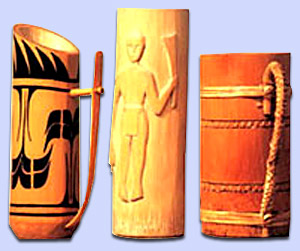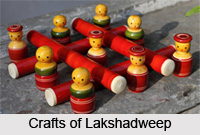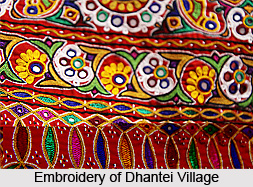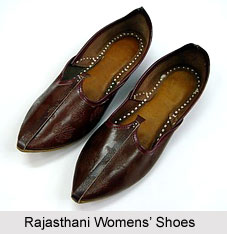 Leather Art in India, plays a vital role in maintaining the balance of India`s economic structure. In India, leather industry was headed by the `Mochis` who by processing dead animals would take the skin of the animals for tanning. Mainly people from the rural parts of India are engaged in the ancestral craft of leather art, designing and manufacturing.
Leather Art in India, plays a vital role in maintaining the balance of India`s economic structure. In India, leather industry was headed by the `Mochis` who by processing dead animals would take the skin of the animals for tanning. Mainly people from the rural parts of India are engaged in the ancestral craft of leather art, designing and manufacturing.
History of Leather Art
The concept of leather art crept into the mind of the primitive man when he used to hunt animals for his food. Gradually, human beings discovered multiple uses of leather as they started employing animal hides for the purpose of manufacturing garments, carpets, decorative clothing accessories and building shelter. The trade of leather tanning was inaugurated in the distant past and developed in India by the period around 3000B.C. The ancient `sadhus` and `rishis` would use mats which were prepared from the skins of animals like tigers and deers. Leather was also used to make caps, armour, bags etc.
Concentration of Leather Art in India
Each state of India mirrors the remarkable style of Indian leather art. Leatherwork of Kashmir is famous for its decorative art like the `applique‚` which is done with the use of coloured leather pieces and gives the product a gaudy but sober look.
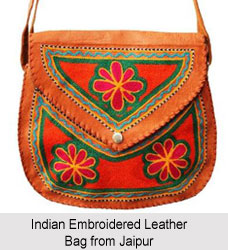 The Indian state of Rajasthan possesses an ancient tradition of various utilities of leather. Rajasthani mochis make simple, yet beautiful shoes which last for a prolonged period of time. Bhinmal in Southern Rajasthan is a considerable place where embroidered foot wear is manufactured in abundance. There is a large variety among the traditional leather `chappals` which are made of original and fine coloured leather, often decorated with brocade or embroidery. `Lutti` or `Mojadi` is one of the most admired and fancy footwear with eye catching of Rajasthan. One will come across stunning masterpieces of book bindings composed of leather. For instance, the binding of the book `Gulistan` by Sheikh Sasdi was completed by a Rajasthani craftsman named Karim Ahmed. He was assisted by his sons. In the 19th century, such leather art was favoured by Maharaja Banni Singh. Jodhpur and Jaipur are two cities where the traditional footwear is manufactured, excellent texture and designs are the qualities of this footwear. Jodhpur and Jaipur are highly praised for `jootis`(also known as `kashida`), or `mojdis` which are the kind of ethnic shoes, are decorated with awesome embroidery work. Embroidered leather bags and saddles are the other forms of leather art in Rajasthan which are famous in the nation. All sorts of embroidery work are performed by the local womenfolk of Rajasthan. `Manoti Art` is a type of leather art in Rajasthan, which is on the blink of extinction. This art form was imported from China, but imbibed an indigenous transformation once it was introduced to India. Manoti Art employed camel hide to manufacture several objects which were adorned with bright, floral patterns and colourful gold leaves. It underwent certain modifications in the 16th century under the influence of Rajput and Mughal rulers. Rajasthan also boasts of numerous leather art products like jackets, belts, moneybags and shoes embellished with embroidery.
The Indian state of Rajasthan possesses an ancient tradition of various utilities of leather. Rajasthani mochis make simple, yet beautiful shoes which last for a prolonged period of time. Bhinmal in Southern Rajasthan is a considerable place where embroidered foot wear is manufactured in abundance. There is a large variety among the traditional leather `chappals` which are made of original and fine coloured leather, often decorated with brocade or embroidery. `Lutti` or `Mojadi` is one of the most admired and fancy footwear with eye catching of Rajasthan. One will come across stunning masterpieces of book bindings composed of leather. For instance, the binding of the book `Gulistan` by Sheikh Sasdi was completed by a Rajasthani craftsman named Karim Ahmed. He was assisted by his sons. In the 19th century, such leather art was favoured by Maharaja Banni Singh. Jodhpur and Jaipur are two cities where the traditional footwear is manufactured, excellent texture and designs are the qualities of this footwear. Jodhpur and Jaipur are highly praised for `jootis`(also known as `kashida`), or `mojdis` which are the kind of ethnic shoes, are decorated with awesome embroidery work. Embroidered leather bags and saddles are the other forms of leather art in Rajasthan which are famous in the nation. All sorts of embroidery work are performed by the local womenfolk of Rajasthan. `Manoti Art` is a type of leather art in Rajasthan, which is on the blink of extinction. This art form was imported from China, but imbibed an indigenous transformation once it was introduced to India. Manoti Art employed camel hide to manufacture several objects which were adorned with bright, floral patterns and colourful gold leaves. It underwent certain modifications in the 16th century under the influence of Rajput and Mughal rulers. Rajasthan also boasts of numerous leather art products like jackets, belts, moneybags and shoes embellished with embroidery.
To traverse a long distance of a trackless rocky landscape, the people of The North West Frontier wear shoes of Peshawari model. Kolhapur in South west Maharashtra is one of the most famous places for manufacturing the `Kolhapuri chappals`. Kolhapuri chappals with their intricate design and pattern has added dimension to the facade of Indian leather art. The chappals are often dyed but mainly they are kept in natural colour of the leather. Indian urban population prefers to wear European style shoes in formal occasions such as marriage. In the mid 10th century the British founded a factory for the production of saddles, belts and harness. Hyderabad is the city where special money belts are made and are admired by the Muslims. These money belts are used and are beneficial for the person who go to Mecca for `Haj` and is considered as a remarkable example of Indian leather art.
The leather art of Karnataka is distinguished from the rest of the places by its metallic gold or a touch of silver, painted with figures or animals which are mostly from epics. Delhi is adored for its production of embroidered bags, shoes and jootis which are decorated with silver, gold and pearls.
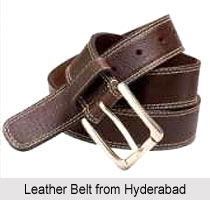 Leather Art Products in India
Leather Art Products in India
Leather art in India also involves the art of puppet making. Shadow puppets are a speciality of the Karnataka coast, around Palghat (Kerala), and Nellore and Nimulkunta in Andhra Pradesh. In Andhra Pradesh the art of leather puppetry is referred to as `Thou Bommulata`. Rajasthan carries a prolonged history of leather art and craft. In the earlier days leather was also employed in the manufacturing of the water carriers. The water carrier was named as `bhisti` which was made out of goat skin. Cooking oil was carried out in camel caravans in leather carriers which are called `kupi` which were made of the inner layer of camel skin. These kinds of carriers were manufactured by a branch of the Muslim Utsa caste in Bikaner. Camel hide bottles with exclusive carved wooden stoppers are manufactured at Jaisalmer. These still stands as the great examples of Indian leather art.
In manufacturing interior decor items also since ancient days leather has made its presence felt. Leather art in making lampshades and lamps has gained importance. Lampshades and lamps are produced with camel hide and are decorated with splendid use of colours, excellent floral designs and plated with thin gold leaves.
Leather art in India is spreading its popularity and demand for various leather crafts day by day. Through the involvement of advanced technology and modern trend the leather technology is hoped to enhance its glamour and tradition.



